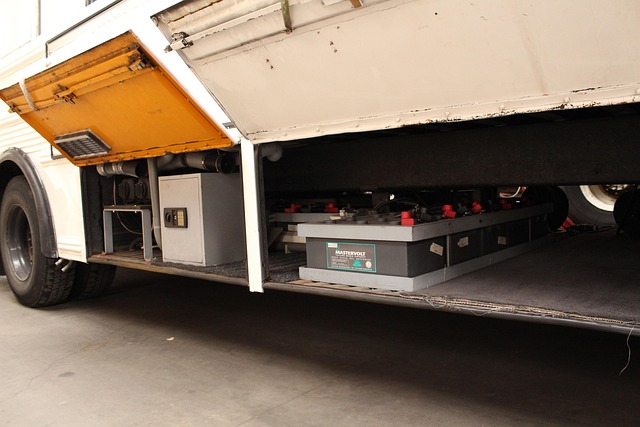Looking to register your car in California? This comprehensive guide walks you through the process, ensuring a smooth experience. First, understand the state’s registration requirements for cars, focusing on key factors like eligibility and fees. Gather essential documents for a successful Vehicle Identification Number (VIN) verification, a crucial step in the registration process. Learn how to select the right registration type and location before submitting your application and paying fees at the California DMV. Don’t miss crucial steps in VIN verification for a hassle-free car registration.
- Understand California Car Registration Requirements
- Gather Necessary Documents for VIN Verification
- Perform Vehicle Identification Number (VIN) Check
- Choose an Appropriate Registration Type and Location
- Submit Application and Pay Fees to DMV
Understand California Car Registration Requirements

Before registering your car in California, it’s crucial to understand the state’s specific requirements. One key step involves completing a Vehicle Identification Number (VIN) verification process. This ensures that your vehicle matches the details on record with the manufacturer and helps prevent fraud. In California, this typically means submitting your VIN for inspection to an approved facility or using a mobile vin verifier service.
The process can be streamlined by leveraging modern solutions like mobile vin inspection services, which allow you to verify your vehicle’s history remotely. This not only saves time but also enhances accuracy by accessing up-to-date data from manufacturers and other reliable sources. Ensure that the service you choose is reputable and compliant with California’s motor vehicle regulations to avoid any complications during registration.
Gather Necessary Documents for VIN Verification

Before you begin the registration process, it’s crucial to gather all the essential documents required for VIN (Vehicle Identification Number) verification. This step is a critical part of ensuring your car’s history and authenticity are accurately represented during the registration. You’ll need to provide proof of ownership, typically in the form of a vehicle title or bill of sale. Additionally, a current registration certificate from the previous state of residence is essential. For those who have recently purchased their vehicle, ensure you obtain a clean vehicle history report, which can be facilitated through various online platforms.
For convenience and speed, many opt for mobile VIN verification services, allowing them to conduct the inspection right at their location. These services offer a straightforward process where a professional will check your car’s VIN against national databases to verify its history and identify any potential issues. Alternatively, you can schedule a traditional vin inspection at a local service center, but this might involve more time and travel. Regardless of the method chosen, having these documents ready ensures a smoother registration experience in California.
Perform Vehicle Identification Number (VIN) Check

Before you register your car in California, it’s crucial to perform a Vehicle Identification Number (VIN) check. This step is essential for verifying the vehicle’s history and ensuring it meets all legal requirements. A mobile VIN verification service or a vin inspection can help you complete this process efficiently. Many services allow you to conduct this check quickly and conveniently from your smartphone, making it a practical first step in preparing your car for registration.
During the VIN verification, you’ll need to cross-reference the vehicle’s information against state records and databases. This includes checking for any outstanding recalls, previous accidents, or other issues that might affect your ability to register. By ensuring your car passes this inspection, you’re taking a significant step in navigating California’s registration process smoothly and avoiding potential delays or complications down the line.
Choose an Appropriate Registration Type and Location

When registering your car in California, the first step is to determine the appropriate registration type based on your vehicle’s classification and use. Different types of vehicles require specific registration processes. For example, personal cars, motorcycles, and recreational vehicles have distinct requirements. Additionally, if you’re importing a vehicle or transferring ownership, special procedures apply. It’s crucial to select the correct category to ensure a smooth registration process.
Choosing the right location for registration is equally important. California offers both in-person and online registration options, with various Department of Motor Vehicles (DMV) field offices and designated third-party services available. While some may prefer the convenience of mobile vin inspection or mobile vin verification services to conduct a VIN check, others might opt for a direct visit to streamline the paperwork. Select a location that aligns with your preferences and ensures quick access to necessary resources.
Submit Application and Pay Fees to DMV

After gathering all the required documents, it’s time to submit your application and fees to the California Department of Motor Vehicles (DMV). This crucial step involves filling out the necessary forms, ensuring your vehicle’s eligibility for registration, and paying the applicable fees. The process can be completed online or in-person at a DMV field office.
One efficient method to streamline this task is by utilizing mobile vin inspection services. These services allow you to have a vin verification done on your vehicle conveniently. A mobile vin inspection ensures that every aspect of your car’s history is accurately checked, providing peace of mind before submitting your application. This can be particularly beneficial when navigating the complex requirements for registering a vehicle in California.
Registering a car in California involves several straightforward steps, from understanding requirements to submitting applications. Ensure you have all necessary documents ready for a smooth process, including proof of ownership and identification. Perform a VIN verification to confirm your vehicle’s authenticity, then select the appropriate registration type and location. Finally, complete the application and pay fees at the DMV, leaving you with a legally registered vehicle in no time. Always remember to conduct a VIN check as part of the process for reliable car registration in California.
